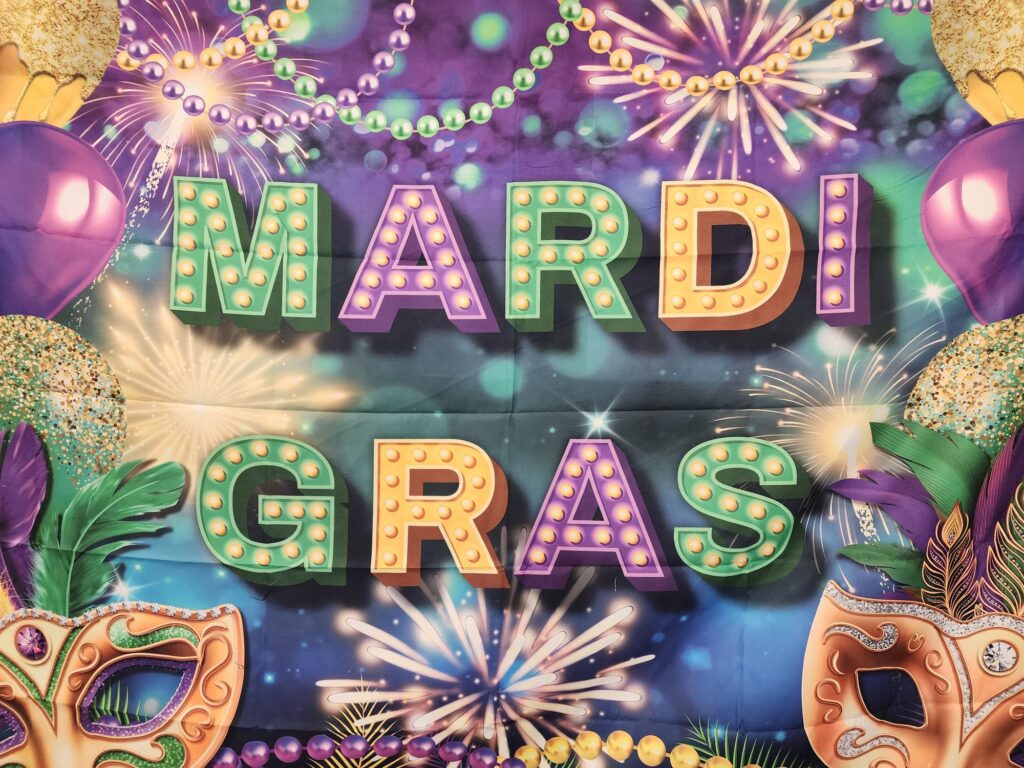
Gabriel Gonzalez
Student Life Editor
From France to New Orleans, Mardi Gras visited ESU last Friday. The Student Activity Association ended the week with its own Mardi Gras from 2 to 4 p.m. There was big-band music, activities and refreshments themed after the New Orleans celebration, with purple, green and gold and designs of French carnivals. It was timed earlier than most activities to include commuters who couldn’t usually attend later times.
“Mardi Gras” translates from French into “Fat Tuesday,” which is in reference to the day before Lent, the Christian tradition of not eating meat Feb. 14 to Mar. 28. When Lent begins it’s called “Ash Wednesday,” marking the beginning of the 40 days before Easter, when the religious holiday ends.
“Those who celebrate Carnival and Mardi Gras essentially get all (or most) of the wildness out of their system before embarking on Lent, which is a time for looking inward, and for taking on new activities (such as prayer and charity) or giving up bad habits or other indulgences,” Dr. Cynthia Leenerts, English professor, says. “This whole thing, in traditional Christendom, is part of a liturgical cycle: speaking as one who participates, sometimes we feast (Carnival!), and sometimes we fast (Lent!), and then we feast again (Easter!), etc.”
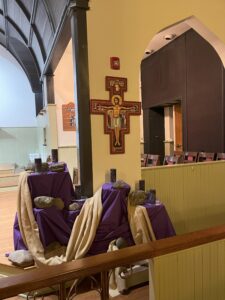
According to mardigrasneworleans.com, New Orleans, being deeply connected to France, kept the holiday even after Louisiana was sold to America in 1803. “Fat Tuesday” is as the name implies, a day to feast before fasting, so the Student Activity Association made sure to include some traditional Mardi Gras treats.
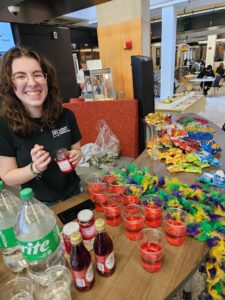
There was grenadine with Maraschino cherries, donuts, popcorn and king cake with plastic babies hidden inside, which whoever finds one is said to have good luck and prosperity. According to eater.com, it also known as a “three kings cake” and is meant to symbolize three kings who brought gifts to Jesus when he was born. They served cakes filled with cream cheese and cherries, and included multiple plastic babies so more than one student could leave with some luck.
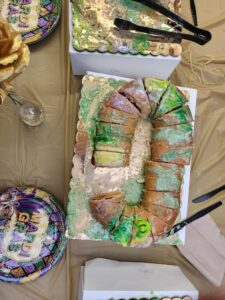
Along the refreshment table were flower necklaces and beads. Sometime in 1890, a carnival king threw fake jewelry to people in the crowds he deemed his loyal subjects, and in the 1920s, beaded necklaces took their place. Usually they’d be thrown to parade goers by staff, but since ESU’s Mardi Gras was indoors, eventgoers could just grab whatever beads they felt like. Purple ones mean justice, green ones mean faith and the gold beaded necklaces represent power.
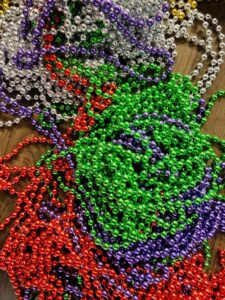
The big-band music was as big as it should’ve been, jazzy and upbeat and orchestrated just like the parades down New Orleans’ streets. The entire Mardi Gras spirit is founded on letting loose, on building up and it’s felt within the trumpets and trombones. The music played on high from start to finish.
If students wanted to unwind from the food and drink and music, they could spend some time layering sand into personal necklaces free to take home. After that, students were given access to a mirror photo booth for free souvenirs of the occasion.
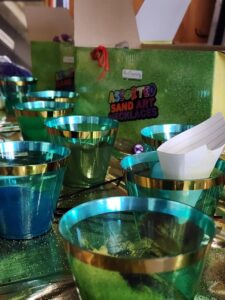
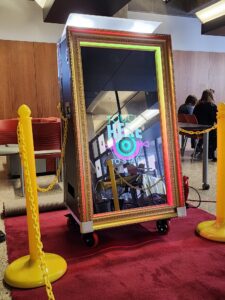
To go with the festivities, there was mask decorating where students could paint and arrange their own Mardi Gras masks. Mask bases were provided as well as paint and paintbrushes. This was a favorite among the attendees, as many students were excited to stamp their own personality onto their mask or simply create pieces of art.
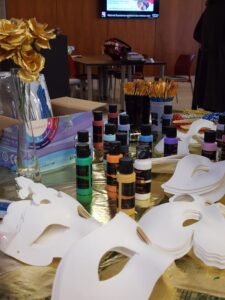
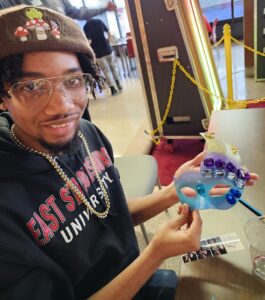
“I think it’s a really nice idea that the college is so inclusive,” said Barbara Welty, English major. “Plus, you’re learning about a culture.”
Though Mardi Gras begins in New Orleans this coming Wednesday, this early arrival is much appreciated.

